Here are samples of the shots that are necessary (these happen to be the raw files for 1866 S1-1000 F-22 FS-001.7). These pictures are all smaller than the ones you will submit so they fit on this page. The pictures you submit should be quite large on your screen at the camera resolution of 1280x960. Try to frame your shots as close as possible to the samples below, so that the area of the coin you are photographing fills as much as possible of the entire frame. Note that the pictures below are of a slabbed coin - do not let that deter you, I have found that indirect lighting minimizes glare off slabs and produces very satisfactory photos.
All coins photographed require these four pictures to start - obverse, reverse, tight shot of the date, and wide shot of the date. In the third and fourth pictures below, frame the date as shown so that the position of the date relative to the ball and the denticles is readily apparent.
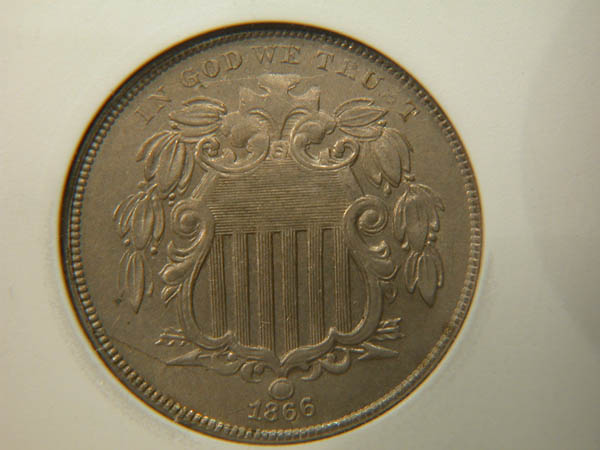
Obverse
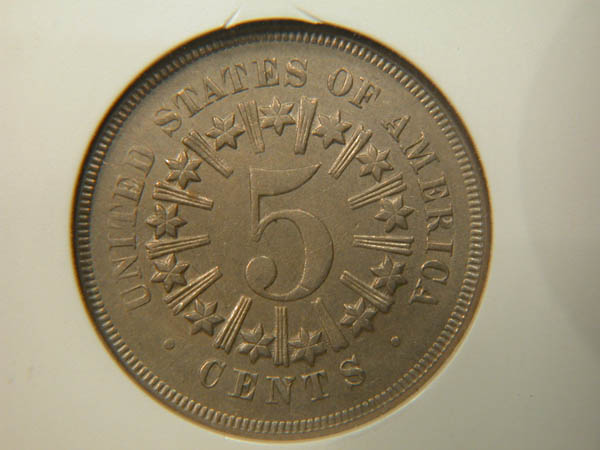
Reverse
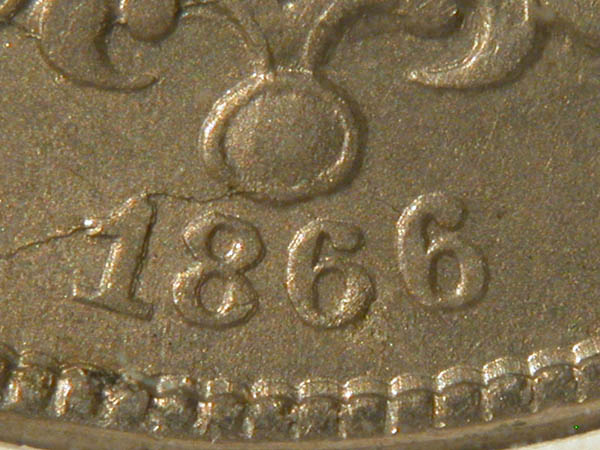
Date
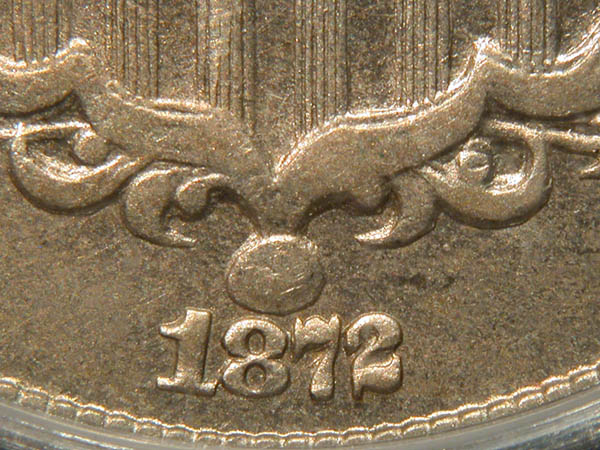
Date - Wide Shot
If the coin is dated 1866, 1867, 1868, or 1869 then the second leaf cluster on the right side has a hand engraved leaf (which is occasionally missing, creating the so-called Missing Leaf varieties). For these years, provide a photo focused on the quadrant containing the second leaf cluster on the right, like this one.
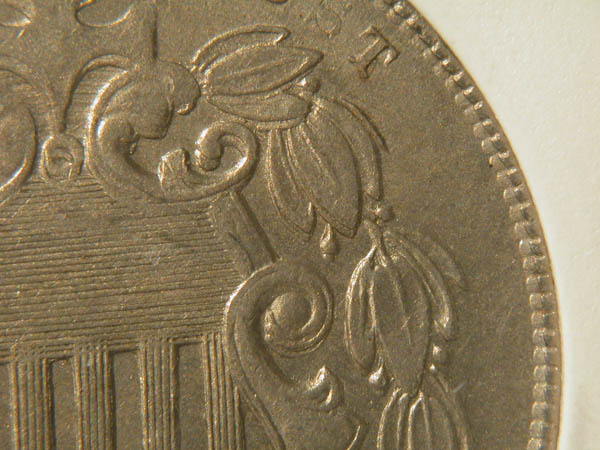
Engraved Leaf
If the coin is a typical repunched date, then you are done for this variety. If the coin is a typical shield nickel doubled die obverse, provide two more photos. The first is a wide shot of the typically doubled area minimally covering the top of the cross to the lowest doubled horizontal line in the shield, and the second is a tight shot of the cross and annulet.
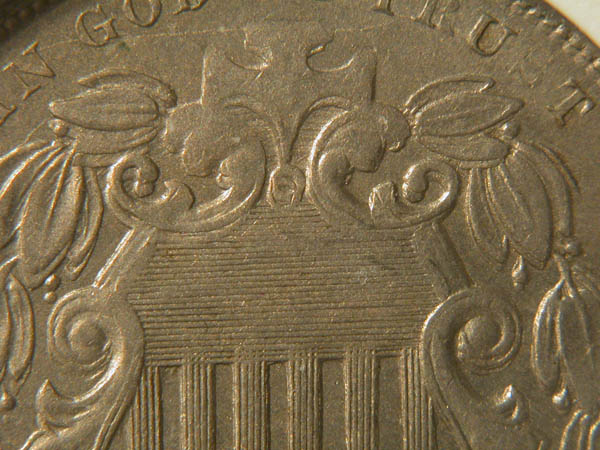
Doubled Die Obverse - Wide Shot
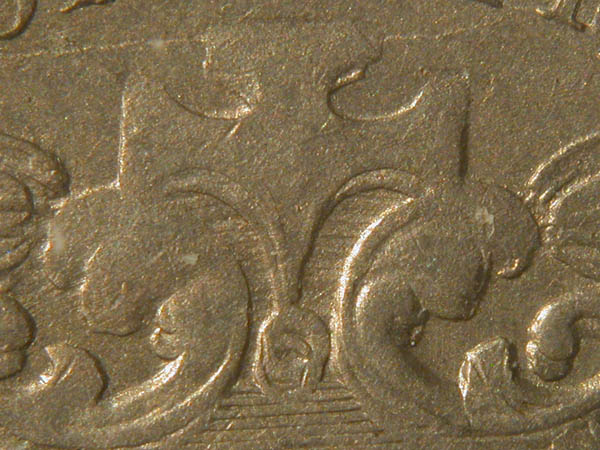
Doubled Die Obverse - Tight Shot
The above examples cover the vast majority of shield nickel varieties. Certain other rarely encountered varieties, such as doubled dies at the motto or doubled die reverses, require different photographs. Generally you should provide close-up photos that highlight the variety feature of the coin you are photographing. Please look at existing similar listings in SNV for guidance. If in doubt about a particular variety, please contact the author for advice. Also, if you are unsure it is always safe to send photos that may not be used - they can be easily discarded. The software is capable of handling up to eight photos of each variety. Even that is not an absolute limit - for the very few coins that really need more than eight photos (like some doubled die reverses), two of the photos can be composited into one image.
Size of the files containing these photos can get very large. If you have a number of varieties to submit at one time, the most effective way to do that may be to burn a CD with the images. If you want to email a small number of images that works too, but please keep each individual email under 10 megabytes in size. You may take multiple emails to send multiple images of a single coin.
*Special Note for "Traditional" Photographers
If you have not yet joined the digital camera age but are skilled with a 35mm camera you can still take photos of your coins and contribute them to SNV. Frame your pictures as described above and have prints made, preferably 4x6. Mail your prints instead of mailing your coins! The author has the equipment to scan your photos into digital form, and would be happy to do so. Your prints can be returned to you if you include return postage.